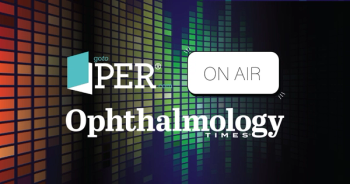
Neuropathic corneal pain: The new ‘umbrella’
Focus of dry eye may shift to ocular surface issues that can cause discomfort in patients
Corneal pain is multifactorial, and clinicians should look beneath the surface to determine potential sources and solutions.
Reviewed by Anat Galor, MD
The term “dry eye” does not represent one disease but rather is an umbrella term that covers factors that may be unrelated to each other. When considering dry eye symptoms, there is a mix of pain and visual disturbances, which are not necessarily driven by the same underlying factors, said
Pain is defined as an unpleasant sensory and emotional experience associated with actual or potential tissue damage, she said. The word “pain” may prompt a barrage of descriptors to come to mind, such as burning, sharp, or dryness, all words that are used by patients to describe numerous sensations, all of which can induce a negative emotional response. In the context of dry eye disease, the word pain, i.e., ocular surface pain, should scream “unhappy nerves,” to clinicians.
Many pathologies can make nerves “unhappy,” including abnormal anatomy and medication toxicity. While patients may present with the complaint of ocular dryness, they may not have dry eye disease, according to Dr. Galor.Physicians have to look outside the tear film in some patients. She described a patient who complained of extreme sensations of dryness but in actuality had redundant inferior conjunctival folds and a central expanded tear lake.
It is a hallmark of conjunctrivochalasis, characterized by loose or redundant bulbar conjunctivae that drape over the lower eyelid margin. Examination after application of fluorescein showed that the nasal and temporal areas usually occupied by the tear lake were obliterated by conjunctiva.
Any conjunctival issue, such as a pterygium or an elevated bleb, can cause dry eye symptoms. Any eyelid issue can cause dry eye symptoms.
She advised that physicians look for eyelid laxity and spastic entropion. Drugs are another cause of dry eye symptoms, as can be seen in patients being treated for glaucoma. Other causes of
All are factors that cause nociceptive pain. A consideration often overlooked is nerves that can become dysfunctional and transmit signals inappropriately, i.e., neuropathic pain.
Dr. Galor noted her steps for identifying the type of pain that patients are experiencing.
Step 1 is conducting a standardized workup by evaluating the symptoms, which includes an understanding of whether the patient is complaining of pain or vision complaints, chronicity, and pain quality.
“Clues that a patient may have a neuropathic component to the pain are complaints of burning, hyperalgesia, for example, from sensitivity to wind, and allodynia,” Dr. Galor noted.
Step 2 involves the investigation of possible systemic issues that might be causing pain. Step 3 is a fast, but complete ocular surface examination. A fluorescein strip can provide information about tear volume and break-up time, staining, eyelid issues, and anatomic abnormalities.
Step 4 considers the presence of persistent pain after instillation of a drop of anesthesia. Once information has been gathered, Dr. Galor said she evaluates it. She first treats the nociceptive sources of pain, such as inflammation and lid margin disease.
“If that does not relieve the pain, I move on,” she said.
When central nerve abnormalities are involved, it must be determined if topical therapies are sufficient to alter peripheral and lateral central nociceptor function. In cases in which central nerve abnormalities are involved, Dr. Galor noted using oral therapy consisting of pregabalin and gabapentin in isolation or in combination with serotonin-norepinephrine reuptake inhibitors (e.g., duloxetine) to centrally modulate the system.
Dr. Galor said she has had success with adjuvant therapies. The emotional component of pain often goes unconsidered. Coping strategies may be acceptance-based, from relaxation therapies to hypnosis. “Instead of focusing on dry eye, a new umbrella to consider is that of ocular surface pain, and numerous factors fall under that umbrella,” she concluded.
Disclosures:
Anat Galor, MD
E: [email protected]
Dr. Galor has no financial interest in any aspect of this report. She is a consultant to Allergan and Novaliq.
Newsletter
Don’t miss out—get Ophthalmology Times updates on the latest clinical advancements and expert interviews, straight to your inbox.













































